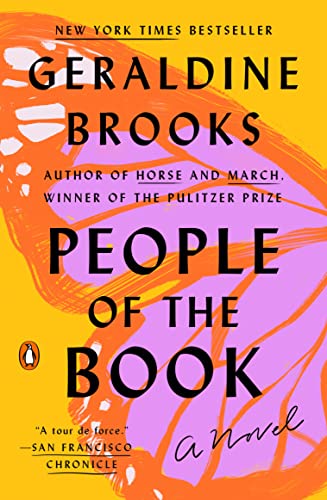“People of the Book” by Geraldine Brooks is a compelling historical narrative that delicately intertwines the past and present, illuminating the profound relationship between humanity, culture, and faith through the lens of an ancient manuscript. This enthralling novel is not merely a tale of a physical object but a vibrant tapestry woven with threads of diverse lives, histories, and destinies, each contributing to the story’s rich fabric.
At its core, the book centers on the Haggadah, a Jewish text used during the Passover Seder, which serves as the fulcrum around which the narrative pivots. Brooks ingeniously employs the Haggadah as a metaphor for resilience amidst adversity, showcasing how artifacts bear witness to the trials and tribulations of those who revere them. Each chapter unveils different epochs of the Haggadah’s journey—from its origins in the 15th century in Spain to its restoration in modern times—reflecting broader themes of survival, identity, and the depths of human connection.
The protagonist, Hanna Heath, is a contemporary conservator tasked with restoring the centuries-old manuscript. As she uncovers layers of history, her exploration becomes a profound journey not only through the past but also within herself. Each brushstroke of her preservation efforts reveals much more than mere design; it exposes a narrative steeped in the lives of those who touched the Haggadah throughout the centuries—each one echoing the struggles against persecution, the fervor of faith, and the flickering hope of survival.
Brooks’ ability to instill personality within the Haggadah itself as a character is particularly striking. It embodies the voices of past generations, whispering secrets long buried in the annals of history. The Haggadah’s travels encapsulate the tumultuous blend of tragedy and comedic relief that accompanies human existence. In this fantastic amalgamation, Brooks navigates themes of cultural heritage and the sanctity of preserving stories—crucial tenets that resonate universally.
The narrative oscillates beautifully between past and present, with each historical segment revealing pivotal moments that both shaped and shattered lives. From the atrocities of the Spanish Inquisition to the palpable tension of World War II, Brooks does not shy away from the darker passages of history. Yet, within each sorrowful account, there lies a flicker of resilience, illuminating the indomitable spirit of humanity. For instance, one gripping chapter recounts the experiences of a Jewish physician during World War II, delineating the stark contrasts of love and loss against a backdrop of horror. These narratives capture the essence of what it means to be alive amidst chaos—something remarkably poignant in Brooks’ storytelling.
Moreover, the characters are impeccably crafted, each embodying unique perspectives that enrich the reader’s understanding of the cultural and historical milieu. From the devoutly religious to the skeptical modernist, every character’s interaction with the Haggadah echoes their individual conflicts, beliefs, and desires. The diverseness of their backgrounds serves as a rich commentary on the multifaceted nature of faith and identity. Brooks strikes a brilliant chord here; as readers traverse through these kaleidoscopic experiences, they are invited to ponder the intricate web of connections that bind us all, traversing both time and ideology.
The author’s prose dazzles with vivid detail and lyrical beauty, transforming historical events into evocative narratives that linger in the mind long after the page is turned. Descriptive passages transport readers to vibrant marketplaces, dimly lit libraries, and the turmoil of war-torn landscapes, all while grounding these scenes in the very essence of human emotion. Brooks’ use of language is nothing short of artistry; words come alive, granting readers access to rich tapestries of feeling and experience, conveying the visceral impact of history.
In contemplating the motif of the Haggadah—the metaphorical vessel of a shared legacy—Brooks invites readers to recognize the multiplicity of stories that interlace through generations. The Haggadah’s resilience in surviving centuries of adversity mirrors the fortitude of those who cherish it. In this light, “People of the Book” emerges not just as a narrative of a precious relic but as a profound exploration of the enduring nature of hope, love, and the human spirit against the ever-looming tide of despair.
Ultimately, “People of the Book” is not solely about the preservation of a manuscript; it is an eloquent testament to the power of storytelling. Brooks compels readers to reflect on their own histories, their cultures, and the stories that shape their identities. Rather than being mere passive recipients of history, we are reminded that we are all protagonists in our own narratives, forging connections across time and space. The two-dimensionality of characters within the novel becomes a mirror reflecting our complexities, fears, and triumphs, urging us to cherish the stories that unite us.
In conclusion, Geraldine Brooks’ “People of the Book” captivates with its rich historical detail and masterful storytelling, exploring themes of identity, survival, and the sanctity of cultural heritage. It compels readers to engage deeply with the shared human experience while serving as a poignant reminder of the artifacts that carry our histories. Through this evocative narrative, Brooks enchants us, urging us to recognize the stories that reside within us all, resonating beyond the pages of our lives.
